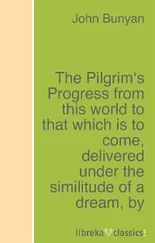By all indications, Mike has made his parents proud. His e-mail username is “A-student,” and he’s just won a coveted spot in Stanford University’s freshman class. He’s the kind of thoughtful, dedicated student that any community would be proud to call its own. And yet, according to an article called “The New White Flight” that ran in the Wall Street Journal just six months previously, white families are leaving Cupertino in droves, precisely because of kids like Mike. They are fleeing the sky-high test scores and awe-inspiring study habits of many Asian-American students. The article said that white parents feared that their kids couldn’t keep up academically. It quoted a student from a local high school: “If you were Asian, you had to confirm you were smart. If you were white, you had to prove it.”
But the article didn’t explore what lay behind this stellar academic performance. I was curious whether the town’s scholarly bent reflected a culture insulated from the worst excesses of the Extrovert Ideal—and if so, what that would feel like. I decided to visit and find out.
At first blush, Cupertino seems like the embodiment of the American Dream. Many first- and second-generation Asian immigrants live here and work at the local high-tech office parks. Apple Computer’s headquarters at 1 Infinite Loop is in town. Google’s Mountain View headquarters is just down the road. Meticulously maintained cars glide along the boulevards; the few pedestrians are crisply dressed in bright colors and cheerful whites. Unprepossessing ranch houses are pricey, but buyers think the cost is worth it to get their kids into the town’s famed public school system, with its ranks of Ivy-bound kids. Of the 615 students in the graduating class of 2010 at Cupertino’s Monta Vista High School (77 percent of whom are Asian-American, according to the school’s website, some of which is accessible in Chinese), 53 were National Merit Scholarship semifinalists. The average combined score of Monta Vista students who took the SAT in 2009 was 1916 out of 2400, 27 percent higher than the nationwide average.
Respected kids at Monta Vista High School are not necessarily athletic or vivacious, according to the students I meet here. Rather, they’re studious and sometimes quiet. “Being smart is actually admired, even if you’re weird,” a Korean-American high school sophomore named Chris tells me. Chris describes the experience of his friend, whose family left to spend two years in a Tennessee town where few Asian-Americans lived. The friend enjoyed it, but suffered culture shock. In Tennessee “there were insanely smart people, but they were always by themselves. Here, the really smart people usually have a lot of friends, because they can help people out with their work.”
The library is to Cupertino what the mall or soccer field is to other towns: an unofficial center of village life. High school kids cheerfully refer to studying as “going nerding.” Football and cheerleading aren’t particularly respected activities. “Our football team sucks,” Chris says good-naturedly. Though the team’s recent stats are more impressive than Chris suggests, having a lousy football team seems to hold symbolic significance for him. “You couldn’t really even tell they’re football players,” he explains. “They don’t wear their jackets and travel in big groups. When one of my friends graduated, they played a video and my friend was like, ‘I can’t believe they’re showing football players and cheerleaders in this video.’ That’s not what drives this town.”
Ted Shinta, a teacher and adviser to the Robotics Team at Monta Vista High School, tells me something similar. “When I was in high school,” he says, “you were discouraged from voting in student elections unless you were wearing a varsity jacket. At most high schools you have a popular group that tyrannizes the others. But here the kids in that group don’t hold any power over the other students. The student body is too academically oriented for that.”
A local college counselor named Purvi Modi agrees. “Introversion is not looked down upon,” she tells me. “It is accepted. In some cases it is even highly respected and admired. It is cool to be a Master Chess Champion and play in the band.” There’s an introvert-extrovert spectrum here, as everywhere, but it’s as if the population is distributed a few extra degrees toward the introverted end of the scale. One young woman, a Chinese-American about to begin her freshman year at an elite East Coast college, noticed this phenomenon after meeting some of her future classmates online, and worries what the post-Cupertino future might hold. “I met a couple of people on Facebook,” she says, “and they’re just so different. I’m really quiet. I’m not that much of a partier or socializer, but everyone there seems to be very social and stuff. It’s just very different from my friends. I’m not even sure if I’m gonna have friends when I get there.”
One of her Facebook correspondents lives in nearby Palo Alto, and I ask how she’ll respond if that person invites her to get together over the summer.
“I probably wouldn’t do it,” she says. “It would be interesting to meet them and stuff, but my mom doesn’t want me going out that much, because I have to study.”
I’m struck by the young woman’s sense of filial obligation, and its connection to prioritizing study over social life. But this is not unusual in Cupertino. Many Asian-American kids here tell me that they study all summer at their parents’ request, even declining invitations to July birthday parties so they can get ahead on the following October’s calculus curriculum.
“I think it’s our culture,” explains Tiffany Liao, a poised Swarthmore-bound high school senior whose parents are from Taiwan. “Study, do well, don’t create waves. It’s inbred in us to be more quiet. When I was a kid and would go to my parents’ friends’ house and didn’t want to talk, I would bring a book. It was like this shield, and they would be like, ‘She’s so studious!’ And that was praise.”
It’s hard to imagine other American moms and dads outside Cupertino smiling on a child who reads in public while everyone else is gathered around the barbecue. But parents schooled a generation ago in Asian countries were likely taught this quieter style as children. In many East Asian classrooms, the traditional curriculum emphasizes listening, writing, reading, and memorization. Talking is simply not a focus, and is even discouraged.
“The teaching back home is very different from here,” says Hung Wei Chien, a Cupertino mom who came to the United States from Taiwan in 1979 to attend graduate school at UCLA. “There, you learn the subject, and they test you. At least when I grew up, they don’t go off subject a lot, and they don’t allow the students to ramble. If you stand up and talk nonsense, you’ll be reprimanded.”
Hung is one of the most jolly, extroverted people I’ve ever met, given to large, expansive gestures and frequent belly laughs. Dressed in running shorts, sneakers, and amber jewelry, she greets me with a bear hug and drives us to a bakery for breakfast. We dig into our pastries, chatting companionably.
So it’s telling that even Hung recalls her culture shock upon entering her first American-style classroom. She considered it rude to participate in class because she didn’t want to waste her classmates’ time. And sure enough, she says, laughing, “I was the quiet person there. At UCLA, the professor would start class, saying, ‘Let’s discuss!’ I would look at my peers while they were talking nonsense, and the professors were so patient, just listening to everyone.” She nods her head comically, mimicking the overly respectful professors.
Читать дальше
![Сьюзан Кейн Quiet [The Power of Introverts in a World That Can't Stop Talking] обложка книги](/books/33084/syuzan-kejn-quiet-the-power-of-introverts-in-a-wo-cover.webp)











